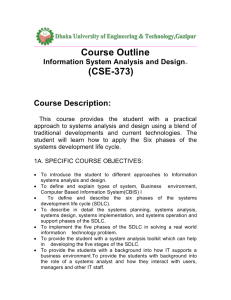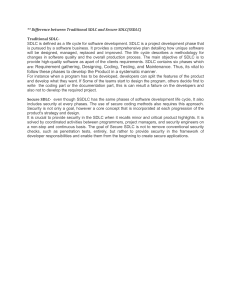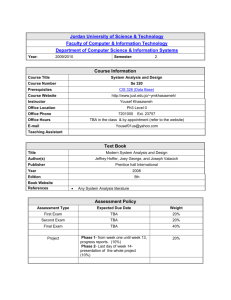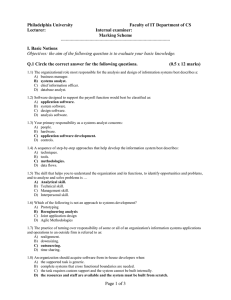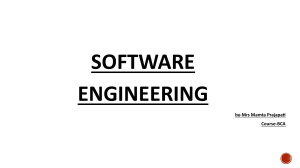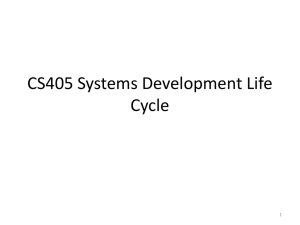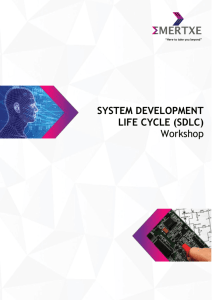Turgut Tezir
advertisement
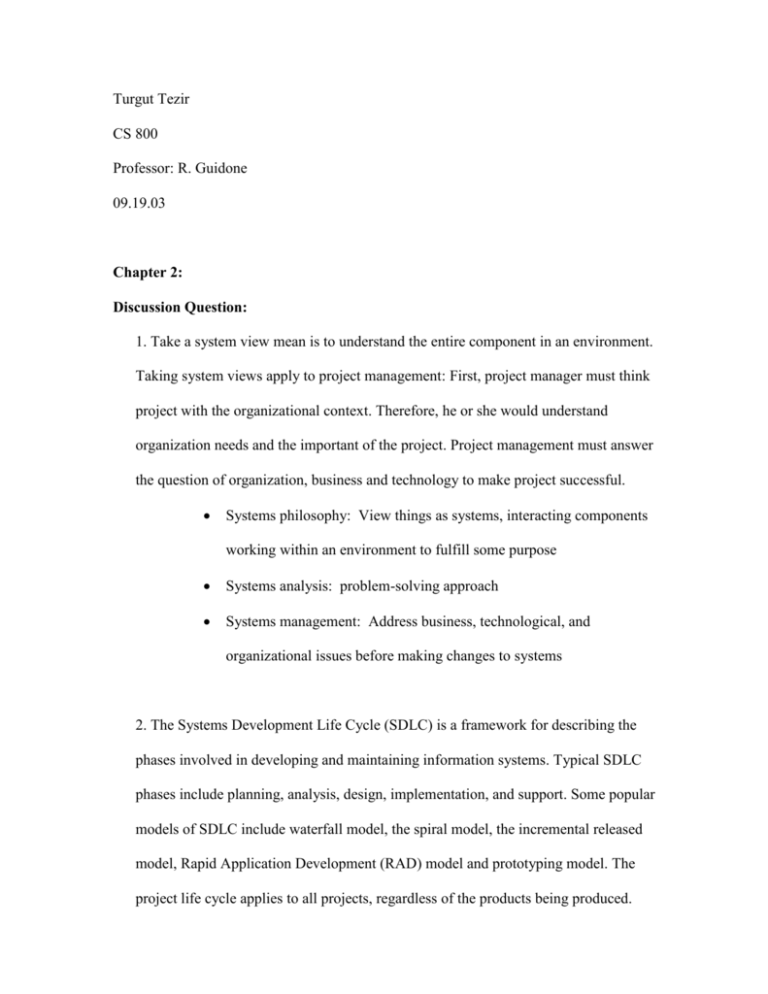
Turgut Tezir CS 800 Professor: R. Guidone 09.19.03 Chapter 2: Discussion Question: 1. Take a system view mean is to understand the entire component in an environment. Taking system views apply to project management: First, project manager must think project with the organizational context. Therefore, he or she would understand organization needs and the important of the project. Project management must answer the question of organization, business and technology to make project successful. Systems philosophy: View things as systems, interacting components working within an environment to fulfill some purpose Systems analysis: problem-solving approach Systems management: Address business, technological, and organizational issues before making changes to systems 2. The Systems Development Life Cycle (SDLC) is a framework for describing the phases involved in developing and maintaining information systems. Typical SDLC phases include planning, analysis, design, implementation, and support. Some popular models of SDLC include waterfall model, the spiral model, the incremental released model, Rapid Application Development (RAD) model and prototyping model. The project life cycle applies to all projects, regardless of the products being produced. However, product life cycle models vary considerably based on the nature of the product. Most large IT products are developed as a series of projects. Project Life Cycle is a collection of phases. In general these phases are: Concept, Development, Implementation and Support. The large information technology products are usually composed of several smaller projects. For example: Project team is building a web site for The City Technical College. This web site will include all academic departments and offices. Sub part of the project will be academic departments and offices. We can consider sub part is a small project and building complete website for the City Technical College main project. 3. Functional manager such as Engineering, Manufacturing, Information Technology and human resources report to the CEO. Their staff have specialized skills in their respective disciplines. Project organization is similar to the functional structure. The different is each project manager report to the CEO instead of functional manager. Matrix structure, personnel often report to both functional manager and one or more project manager. I think, Matrix structures takes more time to complete a project because a person often report two different people. This takes time. On the other hand Project structure is really forward. Project manager has more control over the project and has responsible to report only CEO. 5. I think the most important skills for an information technology managers are: Need to have experience and knowledge about projects. Need to motivate team members; every team member must like him or her to being a manager. Need to be smart and know what to do in a different situation. People can learn most of the skills. On the other hand, people born with different skill. And, they live in different culture, speak different language and believe different religious custom which make people different from others. EXERCISE 2. I searched “software development life cycle” on Google. I had difficult time to choose a website because I found lots of information about software development life cycle with project management. First site: http://www.enre.umd.edu/ctrs-lab/psam-paper2.PDF http://www.idt.mdh.se/kurser/phd/CBSE/reports/Final_reports/report_08.pdf I used www.google.com to search: “project management + development life cycles” I found software development companies. I looked at them one by one and I chose the company Infowit Software solution. http://www.infowit.com/index.asp. This company has well design website that interest me. According the website that Infowit founded by a team of graphic designer, marketing communications and software processionals. This company is selling project management software called Creative Manager. This software developed to deal real word situation and clients. According to the first page of the web site that Creative Manager helps business office; Create competitive estimates fast Build schedules and gantt charts, assign tasks and manage workflow efficiently Have clients review and approve creative online Approve budgets, procurement, timecards and billing Manage and track digital assets Prospect new and existing clients and manage relationships Especially, internal links on the website “Take the Tour” gives very detail information about this software.
